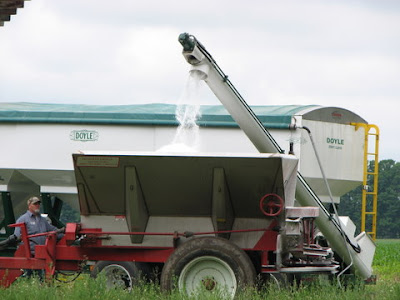Here are some pictures of stuff that is happening and growing on the farm.
A pole bean climbing up a corn stalk
Corn silk
A pumpkin blossom with a native pollinator bee
Sunflowers! my favorite flower
This one is growing in a unusual upright way
A down view of it.
Hand pollenating a zucchini blossom
The female zucchini blossom tied up with grass to keep the bees out.
A yellow zucchini blossom that is also tied, I hand pollinate to keep these zucchini from crossing with other c. pepo this is the family group that pumpkins, zucchini, and some of the other winter squash belong to. Then I will let this zucchini grow and make seed for next year. It is a bit of a challenge to do this, as I need to get out to the squash before the bees in the early morning. Also I try to get at least one male blossom from three different plants then the plant that has the female blossom on it, this is to insure genetic diversity. It makes me thankful for seed companies, but I want to learn this skill of saving seed as it is possible to adapt the plants to my locale microclimate by saving seed from the plant that do well.
Notice the wide space between the plants....
this is so I do not have to water.
Here are close up shots of the landrace and ancient grains we're trialling to see which ones do good in here in the area of michigan. The one above is emmer a very ancient ancestor to modern wheat.
Another type of emmer from Ethiopia called Ethiopian blue tinge it is planted in the spring. All the others were planted last fall.
I have cut and shocked the rye, it will dry for a little wile and then I will thresh it to separate the grain from the straw.
These are oats that I got from a gene-bank, they are no longer grown widely so have become rare I may be the only one growing them in the U.S. The one Above is an old variety called red rust proof. It looks like the oats that are grown here but taller.
These oats look a lot different then the others they must be a very old style that has not been toyed around with by plant breeders it is called Ujszegedi hungarian landrace oat.






















































